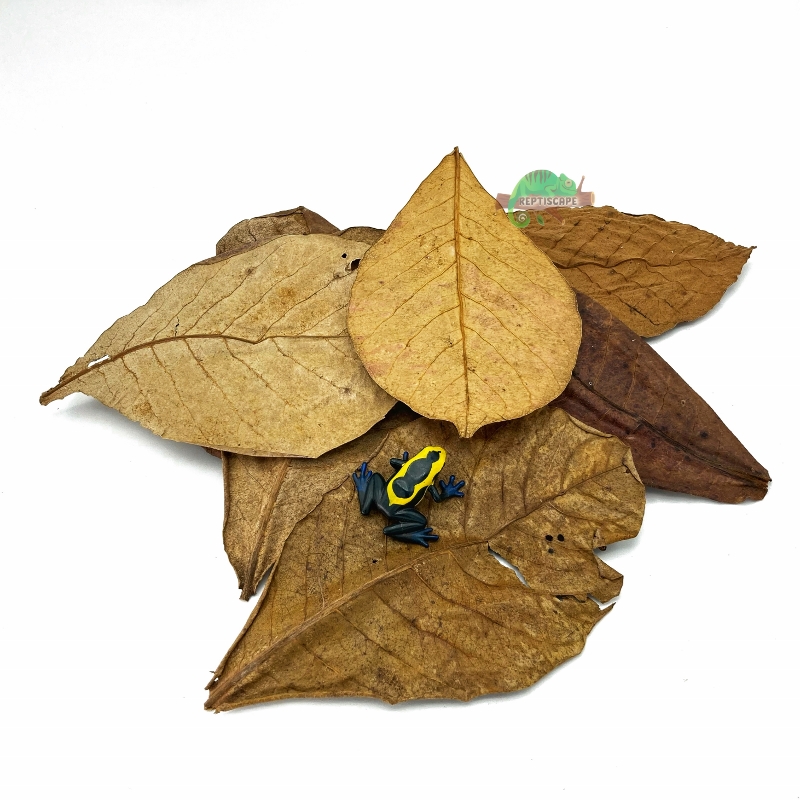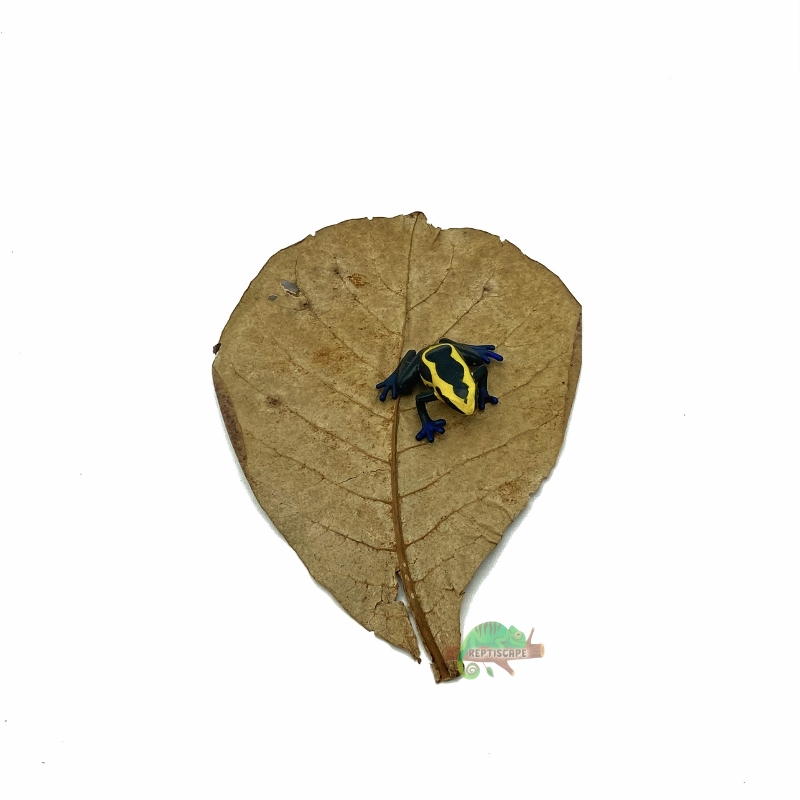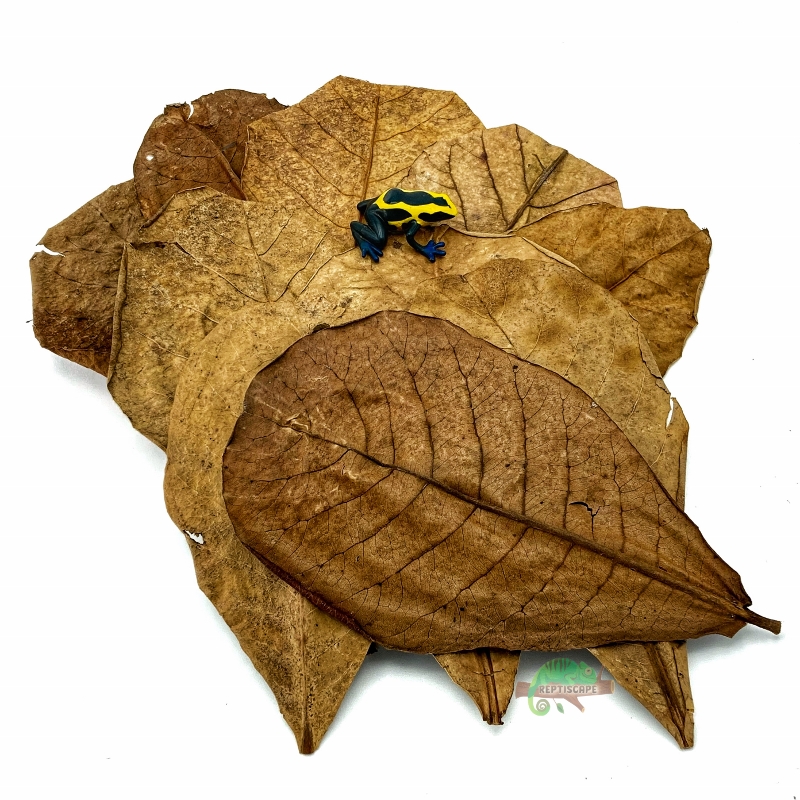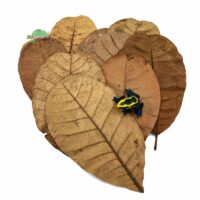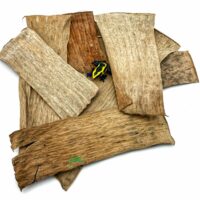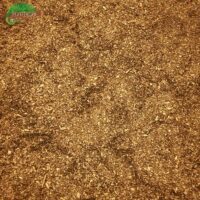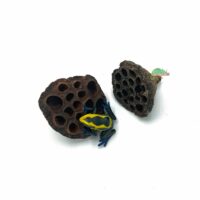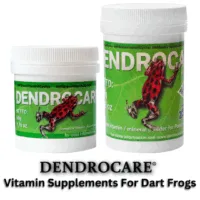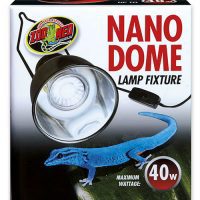Description
Using Catappa Leaves in an Aquarium
Catappa Leaves are the star of our Tannin Collection. They can be used in a natural aquarium set up to help add beneficial nutrients and regulate PH levels. Perfect for Shrimp, Betta Fish, Discus and South American Cichlids and other fish.
Catappa Leaves are an excellent leaf litter for black water aquariums as well as many other setups. The leaves will provide shelter to fish fry and small species of shrimp, crabs, crayfish, snails, and other fish while maintaining a natural look in the aquarium.
They also serve as an ideal growth medium for biofilm and diatoms, both of which are key food sources to countless aquatic animal species, including shrimp and other invertebrates as well as fish.
Catappa Leaves also have pH buffering qualities. As they decompose, they release tannins that slowly lower the pH of the aquarium. This is particularly beneficial for aquatic animals that require acidic, low-pH water.
Catappa Leaves have extremely valuable therapeutic qualities for fish, and can often serve as a harmless preventative medicine in the aquarium. They are highly antibacterial and anti-fungal and support or increase slime coat, scale, and shell production in fish and invertebrates.
This is particularly crucial during the introduction and acclimation of animals to the aquarium and after water changes. Catappa Leaves also enrich the aquarium water with organic compounds that are beneficial to fish that live in still, stagnant waters such as betta fish.
Using Catappa Leaves in a Terrarium
Leaf litter not only helps with providing a naturalistic appearance, the leaves also provide hiding spots for animals such as dart frogs and small reptiles. Even snakes will enjoy hiding under the leaves.
Additionally, micro fauna like springtails and isopods will use the decomposing leaves as food.
In the forest, the leaf litter may be several inches thick. Typically in a naturalistic or bioactive terrarium, you want to have the leaves at least a few layers deep and you should routinely add more leaves as you see them decomposing.
Using Catappa Leaves to raise Dart Frog Tadpoles
There are several ways you can use Catappa Leaves to way to raise healthy Dart Frog tadpoles.
Direct method
The easiest method is to simply break off a small piece (approx. 1″) of Indian Almond leaf and place it in the water with the tadpole. The leaf will slowly release the tannins in to the water.
Tadpole Tea
Place a single Indian Almond leaf into a cup, then add 1 cup of boiling water. Allow tea to cool, and use this water directly with your dart frog tadpoles. You can repeat this method with a single leaf, until the tannins no longer discolor the water brown. The darker the color, the stronger the tea will be. Store the extra tadpole tea in the fridge, just be sure to allow it to reach room temperature prior to using it with tadpoles.
This method can be done with multiple leaves to make larger batches.
Using Indian Almond Leaves to create a Black Water Extract
This method will make a large amount of tannin concentrate that can be stored in the fridge for months. Just be sure to allow it to warm to room temperature prior to using with tadpoles. Place approximately 30 Indian Almond leaves into a large pot with 4 liters (1 gallon) of fresh, clean water. Add more leaves from our Tannin Collection to harness their unique properties. You can also add about 15-30 Casuarina Cones and/or Alder cones or other terrarium botanicals to increase the potency of this extract.
Allow the leaves to steep in the water at room temperature for at least 24 hours. You may want to weight the leaves down until they become waterlogged. The following day you can boil the leaves for approximately 20 minutes. Then allow the mixture to cool and stew for another 24 hours. The following day you will want to boil the tea one more time for 20 minutes, and allow to cool and stew for another 24 hours.
Now you can remove the leaves, and strain the water if you wish to remove the small debris. Simply run the tea through a coffee filter, cheese cloth or even nylon stockings. You’ll notice that the water is now nearly black. You can now use this black water extract to make tadpole tea. Simply pour approximately 1-2 ounces of the extract into 4 liters (1 gallon) of freshwater, to make a new batch of tadpole tea.
How to clean and sanitize Catappa Leaves
While you can simply rinse your leaves, it is recommended that you also sterilize the leaves prior to using them in a terrarium or aquarium. To achieve this you can microwave damp leaves for 1-2 minute, boil leaves for approximately 5 minutes, or bake damp leaves at 200 °F for approximately 15-20 minutes.
Catappa Leaves come from the Terminalia catappa tree. Commonly called Indian Almond Leaves, they also go by other names such as: Katappa leaves, Tropical Almond leaves, Sea Almond leaves or Katappang leaves.
Each package contains 10 dried Catappa leaves. Large leaves are approx 8-9” (20-23cm) and the small leaves are approx 6-7” (15-18cm)
Due to the nature of this product there will be some variation in shape, size and colour.
Looking for more leaf litter for your terrarium? Check out our Leaf Litter Collection Here.
Click here if you’re looking for smaller Indian Almond Leaves, that are approx 5-6″ and sold in smaller quantities.
Reptiscape Catappa Leaves are available for sale and shipping in Canada.

